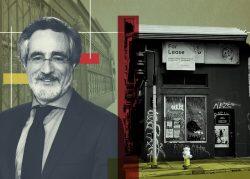San Francisco’s long-planned retail vacancy tax, which went into effect last year, has seen a low response rate from taxpayers, according to data released by the city.
Only 74 property owners and tenants have paid the tax, representing just 2.6 percent of the approximate 2,800 potentially taxable properties that were listed as vacant for more than 182 days in the year, the San Francisco Chronicle reported.
The tax applies to around three dozen shopping districts near residential areas, excluding Downtown. The low response does not necessarily indicate a lack of empty storefronts along the city’s retail corridors.
Amanda Fried, chief of policy and communications at the Office of the Treasurer and Tax Collector, clarified that the figures represent taxpayers who reported vacancies voluntarily and not audited information on the actual number of vacant properties.
Some currently vacant storefronts are exempt from the tax, and the number of taxpayers is expected to increase as data is updated. While around 2,400 businesses filed tax returns despite being mostly exempt, there could be thousands more that have not yet filed for properties in the designated areas.
The retail vacancy tax is based on the property’s street frontage, starting at $250 per foot in the first year, increasing to $500 in the second year and reaching $1,000 in the third year.
In 2022, the tax generated $667,847 in revenue, falling within the city’s projected range of $300,000 to $5 million. The revenue collected will be allocated to a small business assistance fund.
Landlords are primarily subject to the tax, but tenants may be liable if the leased space remains empty. However, there is an exemption if the tenant operates for 182 days before shutting down. Vacant properties with ongoing building permit processing are also exempt. The exact number of exempt buildings is currently unavailable.
The city expects full compliance and awareness of the tax to be achieved within three years, as is common with new taxes.
Supervisor Aaron Peskin, the measure’s sponsor, initially aimed to influence landlord behavior rather than generate revenue. Critics argue that the tax is an ineffective solution to the problem of retail vacancies, which have surged during the pandemic.
Kazuko Morgan, a retail broker at Cushman & Wakefield, emphasized that landlords are generally eager to lease their spaces, and the number of taxpayers may be low because retail areas near residential neighborhoods have fared relatively better during the pandemic.
The city plans to continue communicating with property owners and tenants about the tax while conducting further outreach efforts. Additionally, San Francisco voters approved a vacancy tax on residential properties last fall, although real estate groups have filed lawsuits to block its implementation.
Read more



— Dana Bartholomew
